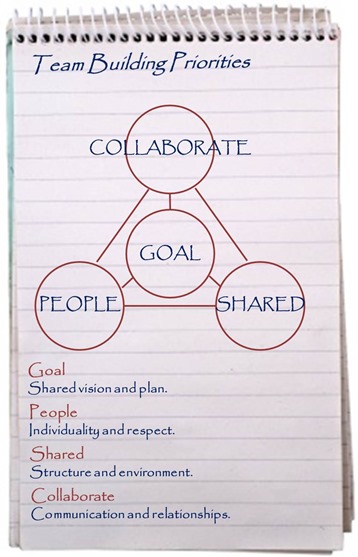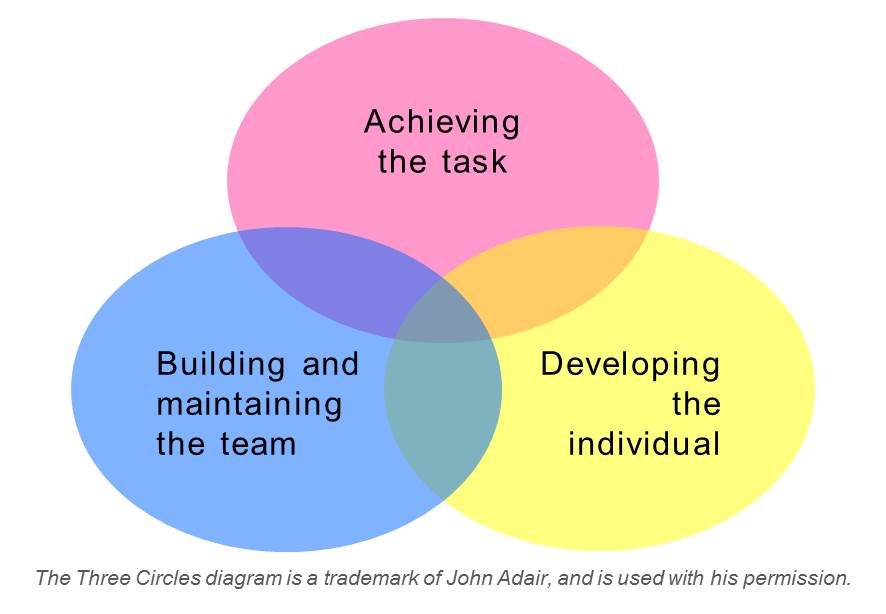Pocketblog has gone back to basics. This is part of an extended management course.
Team building is one of those things that many managers – and professional trainers – get badly wrong. I think that part of the reason for this is that there is no simple underlying model that helps people to understand what it is, what they need to to achieve and therefore how to select and combine team-building activities effectively.
So here is a model to fill that void, in the sure and safe knowledge that there will always be a vast number of team building activities that you can access on the web, simply by searching on:
‘team building activities/exercises/games.’
A Model for Team Building
Creating a model needs a strong definition as a starting point and I will start with my own definition of a team.
‘A team is a small number of people who collaborate to achieve a shared goal.’
You will see that I have highlighted five of the words in the definition, which help us understand what team building is and is not. By looking at each of these words in turn, we can get some valuable insights.
Small
A team is a small group of people. This is not the place to get into the definition of ‘small’ and how different sizes of team operate. For our purposes, it tells us that there has to be some selection that stops the team from becoming too big and ceasing to function properly as a team. The selection takes place before the team comes together, or sometimes is a culling process to remove unwanted members from the team to improve its performance.
While this may well be a trigger for needing team building, it is not, itself, a team building process. All of the other four highlighted words lead to team building interventions.
Goal
A team needs a goal to work towards and some team building activities are focused on creating one, interpreting what is already there, or articulating the goal in compelling and powerful manner. These sort of team building activities are about more than just rallying around a banner – they give team members a sense of purpose, because a good goal answers their need for meaning in their work, by answering the question:
‘why are we here, doing what we are being tasked to do?’
People
Meaningless team cliché number one: ‘There is no I in team’. A team that is not made up of individuals, each with their own passions, experiences, skills and perspectives has no power to it. So some team building activities are designed to emphasise these differences and make team members aware of the resources that their fellows bring.
The sort of activities that we find are discovery, exploration, sharing and respect activities, which answer the question:
‘who am I working with and what can they contribute?’
Shared
Working together, towards a shared goal requires an infrastructure, norms of behaviour, procedures, organisation and motivating culture. Consequently we sometimes need team building activities that will help create these from scratch, modify what we have, if it is not working, or embed what is working to make it more efficient.
These sort of activities answer the question:
‘how will we work together in an effective manner?’
Collaboration
By far the most activities that you will find are focused around our fourth priority; collaboration. These activities work on team necessities like communication, trust, relationship building, problem solving, negotiation, decision-making and conflict resolution. many exercises that you will find deal with these and, helping to build the capability to get on well with one another. Trainers and facilitators love these sorts of exercise and know them well, so avoid the trap of getting drawn into doing one of these when the collaboration dimension is not your top team building priority.
Three top tips
- Make sure, before you start planning any team-building activities or events, you know what your reasons are and what objectives you have in setting out. Set yourself a success criterion that answers the question: ‘how will you know if the event or activity has worked?’ Use this as the basis for selecting, designing and planning your event. Ideally build yourself a business case to demonstrate that your plans are worth the costs.
- Ensure that your activities have a real link to what your team does and needs to do. Team members will quickly become de-motivated if they fail to spot a good answer to the question: ‘why are we being asked to do this?’
- Make sure that whatever you plan is fully inclusive and that every member of your team will be able to participate with minimum barriers – physical and mental. Any barriers there are will create tensions an divisions in your team, undermining your objectives.





